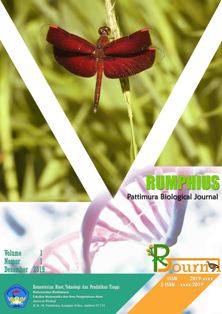EVALUATION OF ORGANOLEPTIC PUDDING MORINGA LEAF (Moringa oleifera) BASED ON VARIATIONS ADD SUGAR
Abstract
Moringa plant is a multipurpose plant that contains many important nutrients needed by the body such as calcium, vitamin B, vitamin A, vitamin C, protein and potassium. Based on this nutritional content, Moringa plants can be processed into vegetable products, namely buding products that are useful and nutritious. To gain acceptance regarding the preferences of consumers or the public in liking a food or beverage product, it is necessary to carry out an organoleptic test. The aim of this research was to determine the organoleptic quality of pudding products made from Moringa oleifera leaves based on variations in the addition of 100gr, 150gr and 200gr sugar. The method used is descriptive research to analyze the level of liking for pudding products. The research results showed that the organoleptic tests on pudding products made from Moringa oleifera leaves were different based on variations in the addition of 100g, 150g and 200g sugar. The variation in adding 100g of sugar shows the organoleptic results of the pudding product with a rather attractive color, slightly sweet taste, soft texture and a somewhat distinctive Moringa aroma. The variation in adding 150g of sugar shows the organoleptic results of the pudding product with a rather attractive color, sweet taste, soft texture and a somewhat distinctive Moringa aroma. The variation in adding 200g of sugar shows the organoleptic results of the pudding product with a rather attractive color, sweet taste, soft texture and a distinctive Moringa aroma.
Downloads
References
Afrina, S., Chismirina, and Magistra, R. Y. 2016. Minimum inhibitory and killing concentrations of lime leaf extract (Citrus aurantifolia) against Aggregatibacter actinomycetemcomitans in vitro," Cakradonya Dent. J., 8 (1), 68-76.
Anwar, F., Latif, S., Ashraf, M. and Gilani, A.H. 2007.Moringa oleifera: a food plant with multiple medicinal uses.Phytother.Res. 21,17-25.
Buckle, K.A. R.A, Edwards, G.H, Fleet. M. Wottoon.2009. Science Food Translated by Hari Purnomo and Adiono. Jakarta: University of Indonesia.
Cahyadi, S, 2006. Analysis and Health Aspects of Food Additives. Mold Pertama.PT. Bumi Aksara. Jakarta.
Dewi, F.K., Suliasih, N. and Gardina, Y. 2016. Making cookies by adding moringa leaf flour (Moringa oleifera) at various baking temperatures. Article.http://repository.unpas.ac.id. Accessed 17 April 2017.
Dwinaningsih, Ena Ayu. 2010. Chemical and Sensory Characteristics of Tempeh Variations in Soybean/Rice Raw Materials and Addition of Rice and Variations Fermentation Time. Thesis Faculty of Agriculture. Surakarta: Sebelas Maret University.
Halimah, 2010. Phyochemical Test and Toxicity Test of Anting-Anting plant extract (acalypha indica Linn) against larvae shrimp (Artemia salina Leach).Thesis.Department of Chemistry, Faculty Science and Technology.University Islam, the Country of Maulana Malik Ibrahim, Poor.
Hehakaya, W, 2018. Testing Carbohydrate Contents in Seed-Based Milk Products Seagrass (Enhalus acoroides) Based on Variations in Adding Sugar as an Alternative Food Ingredient for Coastal Communities. (Thesis). Biology Education Study Program, Faculty of Teacher Training and Education, Pattimura University.
Koul, B. & Chase, N. (2015). Moringa oleifera lam.:panacea to several maladies. Journal of Chemical and Pharmaceutical Research 7(6), 687-707. Retrieved fromhttp://www.academia.edu/3503081 5/Moringa_oleifera_Lam._Panacea_to _several_maladies
Meilgaard.M.,G.V.Civille.,&B.T.Carr.1999. Sensory Evaluation Techniques [3rd edition]. New York: CRC Press US of America.
Mudjajanto, E. Setyo & L.N. Yulianti. 2008. Making Various Breads. Swadya Spreader. Jakarta.
Nurjanah, S. Pipih, R. Lila. 2007. Making Instant Pudding Flour. Fisheries Product Technology Bulletin. Vol X no.1.
Rahayu, W.P. 1998. Diktat on Organoleptic Assessment Practical Guidance.
Authors who propose a manuscript and have it approved for publication know that the manuscript will be registered and become part of the RPBJ. Authors and readers understand that this journal is open and all its contents can be accessed freely, provided that RPBJ is still listed as the source of information. The hope is that this journal can become a vehicle for exchange and scientific knowledge for society and the scientific community, especially in the field of Biology and other branches of science.









